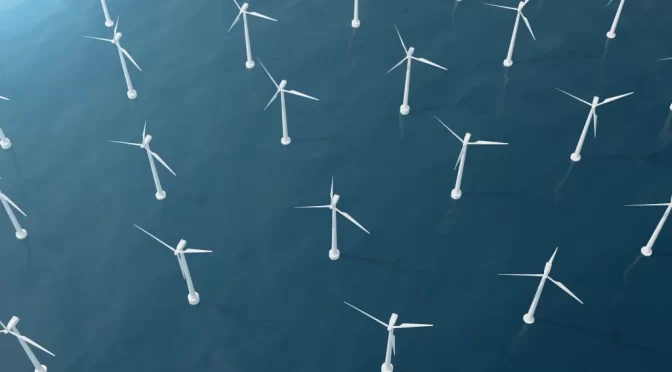Before the end of 2023, the hearing and information process of the regulatory framework for offshore wind will begin, which will lay the foundations for the development of offshore wind in Spain. Spain is prepared to develop offshore wind projects off our coasts. The Canary Islands announces the creation of a Canarian Observatory of Offshore Wind Energy,
The development of floating offshore wind energy in Spain is imminent. The objective of installing 3 GW of offshore wind by 2030, identified in the National Integrated Energy and Climate Plan (PNIEC), presents challenges that are analyzed in the II Offshore Wind Congress. One of these challenges is to advance a regulatory framework and planning as soon as possible, which activates the development work of the first parks. Spain faces a unique opportunity as a country to be a world leader in the development of the floating offshore wind sector, already being an industrial and technological development hub.
A new edition of the Offshore Wind Congress brings together more than 400 national and international experts in Las Palmas de Gran Canaria. This second edition has the support of the Canary Islands Maritime Cluster and Fedeport as co-organizers; PROEXCA as institutional partner; and the Canary Islands Wind Association (AEOLICAN) as a local partner. The II Offshore Wind Congress brings together more than 60 speakers, 9 technical sessions and 6 keynotes for two days.
Worldwide reference
Spain has an industrial fabric and logistical infrastructure capable of absorbing practically the entire value chain of offshore wind technology. This will allow the energy and climate objectives established by the country to be achieved, in addition to positively favoring the industrial development and the Spanish economy thanks to the creation of qualified employment, the increase in exports and the growth of the national GDP.
Our offshore industry is prepared to address not only the development of future wind farms on our coasts, but also a very significant part of the offshore wind power that is being developed in other markets such as the United Kingdom, Holland, Germany or the United States. .
Floating technology is a disruptive solution, which allows the opening of multiple markets currently unviable due to the depth of their coasts. The bet is strategic and long-term for the country.
An imminent development
During the inauguration, Juan Diego Díaz, president of AEE, stated: “We find ourselves at a decisive moment. We are 100% dependent on regulation and planning. Currently we need long-term signals that activate the mechanisms to move forward as soon as possible. We are late given the political and economic situation of the country, but we are optimistic and we have time to address offshore wind development so as not to fall behind other countries around us. Collaboration between all actors in the sector, public administrations and territories is essential for the harmonious development of offshore wind, achieving understanding and positive synergies between all of them.”
The Secretary of State for Energy, Sara Aagesen, during the inauguration of the Offshore Wind Congress, announced that “before the end of the year we will begin the hearing and information process of the regulatory framework for offshore wind, which will lay the foundations for the development of projects with agile processing and with the maximum guarantees that will be provided, simultaneously, by the economic regime of the auction, the reserve of access capacity and the reserve of the maritime-terrestrial public domain.
Aagesen has highlighted that offshore wind is a huge opportunity for decarbonization that, in isolated systems like the Canary Islands, provides us with a double benefit: strategic autonomy and security of supply. “RenMarinas has allowed us to incentivize 21 innovative projects with more than 147 million euros to promote Spain as a benchmark in the development of marine renewables. The Canary Islands have proven to be an extremely attractive point, attracting 20% of the funds,” concluded the Secretary of State.
The Canary Islands Government has participated in the inauguration with the representation of the Minister of Ecological Transition and Energy, Mariano Hernández Zapata, who has assured that “we are aware of the offshore wind potential that we have to reach our decarbonization objectives for 2040, where the Canary Islands are a “Excellent strategic enclave to welcome new challenges.”
Hernández Zapata has also announced the creation of a Canarian Observatory of Offshore Wind Energy. A resource that, in the words of the counselor, “will have the mission of encouraging and promoting the development of offshore wind energy in the Canary Islands, bringing together all companies and institutions in the sector around the common objective of developing offshore wind farms in our waters.” .
More challenges: innovation and efficiency, visibility, environmental sustainability and social acceptance
One of the challenges is to continue promoting innovation and efficiency in the design, construction and operation of future floating offshore wind farms, concerned and busy with cost reduction and greater competitiveness.


